Ceramica Maxima: ‘More is more and less is a bore’
Echoing the joie de vivre of grape harvest and Barossa’s recent harvest festival, JamFactory at Seppeltsfield’s current exhibition fizzes over with the uninhibited vigour of more than 80 ceramic pieces by nine contemporary Australian artists.

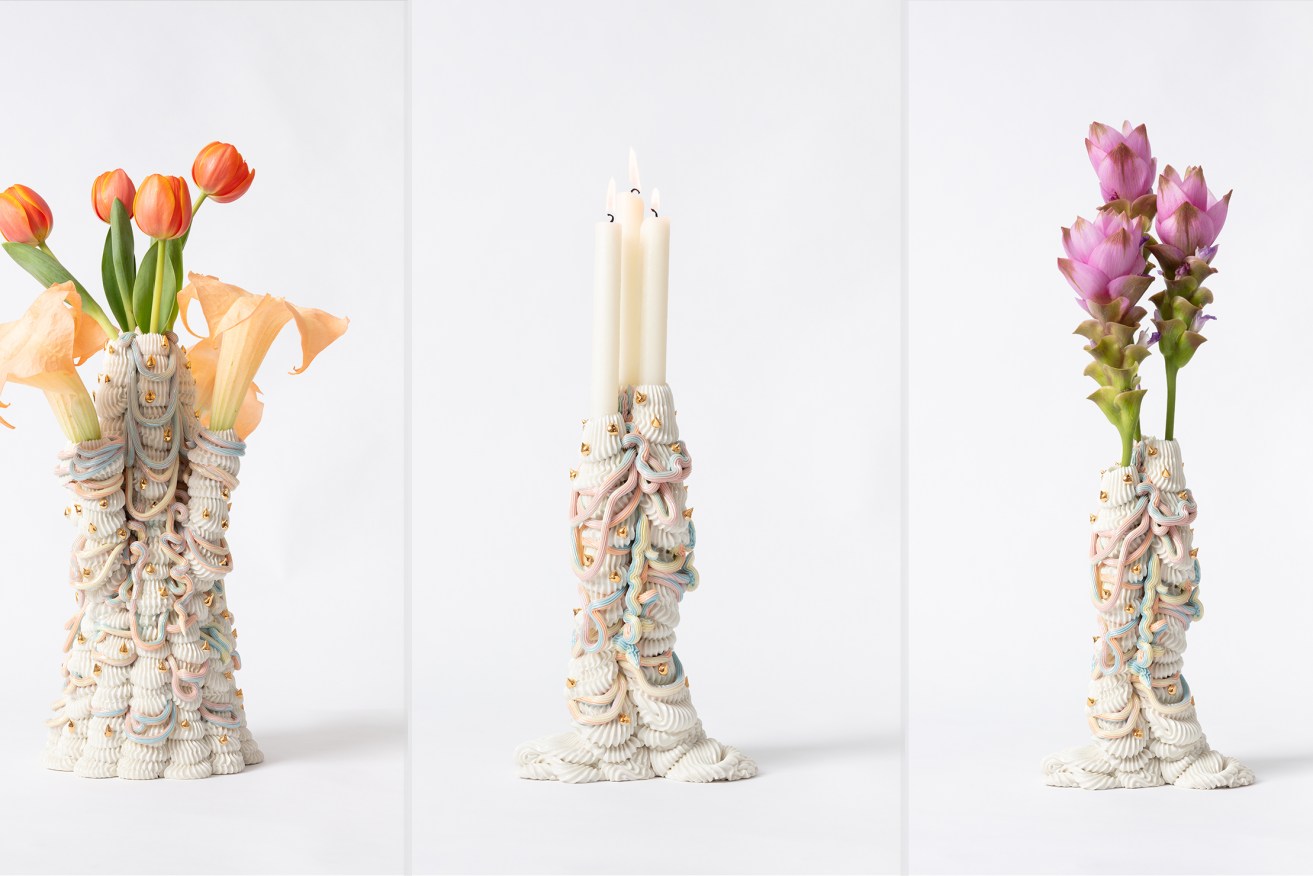
'Decadent enough for Marie Antoinette to eat': A selection of works from NSW artist Ebony Russell's 'Over the top' series of porcelain candelabras and vases.
Set in the bucolic surroundings of Seppeltsfield wineries, JamFactory’s satellite exhibition space is brim-full of rebellion against the pared-down aesthetic of the minimalism that’s been prevalent in recent years. “More is more and less is a bore,” quotes the Ceramica Maxima exhibition pamphlet, words from flamboyant New York fashion doyenne Iris Apfel.
Where minimalism is about quiet spaces and the reduction of the unnecessary – in texture, colour, pattern, surface decoration, or the material possessions Marie Kondo might suggest you thank and let go – maximalism thumbs its nose at restraint, going all-out with excess in everything.
Maximalism interrogates the act of making as the production of the purely functional. Working in ceramics has long been seen as a craft, a practice lying outside the realm of fine arts. The making of useful, beautiful objects for the home is certainly a noble pursuit, but it’s suffered at times from a perception that it’s somehow less elevated than the act of creating in the fine arts.
While some of the objects in Ceramica Maxima are functional, or carry suggestions of functionality, the majority are not. They are objects for their own sake, decorated for decoration’s sake, carrying meanings that transcend functionality, that embody the individual expression – as well as the consummate technical skills – of each of the artists who created them. In that sense, these are fine art objects and their makers, visual artists.
Though united in the spirit of “Maxima”, each artist’s expression of “more is more” is thrillingly eclectic. Working in the medium of clay offers boundless possibilities, and an exuberant array of technique, style, colours and textures is on display.
Ebony Russell (NSW) unpacks the feminine in her ceramic confections of creamy pastels. With piped layers that look like buttercream icing, her Over the top series of porcelain candelabras and vases are luscious towers of soft, creamy colours globbed with gold, small monuments to the technical prowess required for successful firing. They look decadent enough for Marie Antoinette to eat.
Russell’s series of emoji faces are a result of her response to turning 39, piped in sweet swirls of baby blue, pale pink and grey that mask the ambivalence of growing older in a society that values a woman on her youth, beauty, and conventional notions of female domesticity.
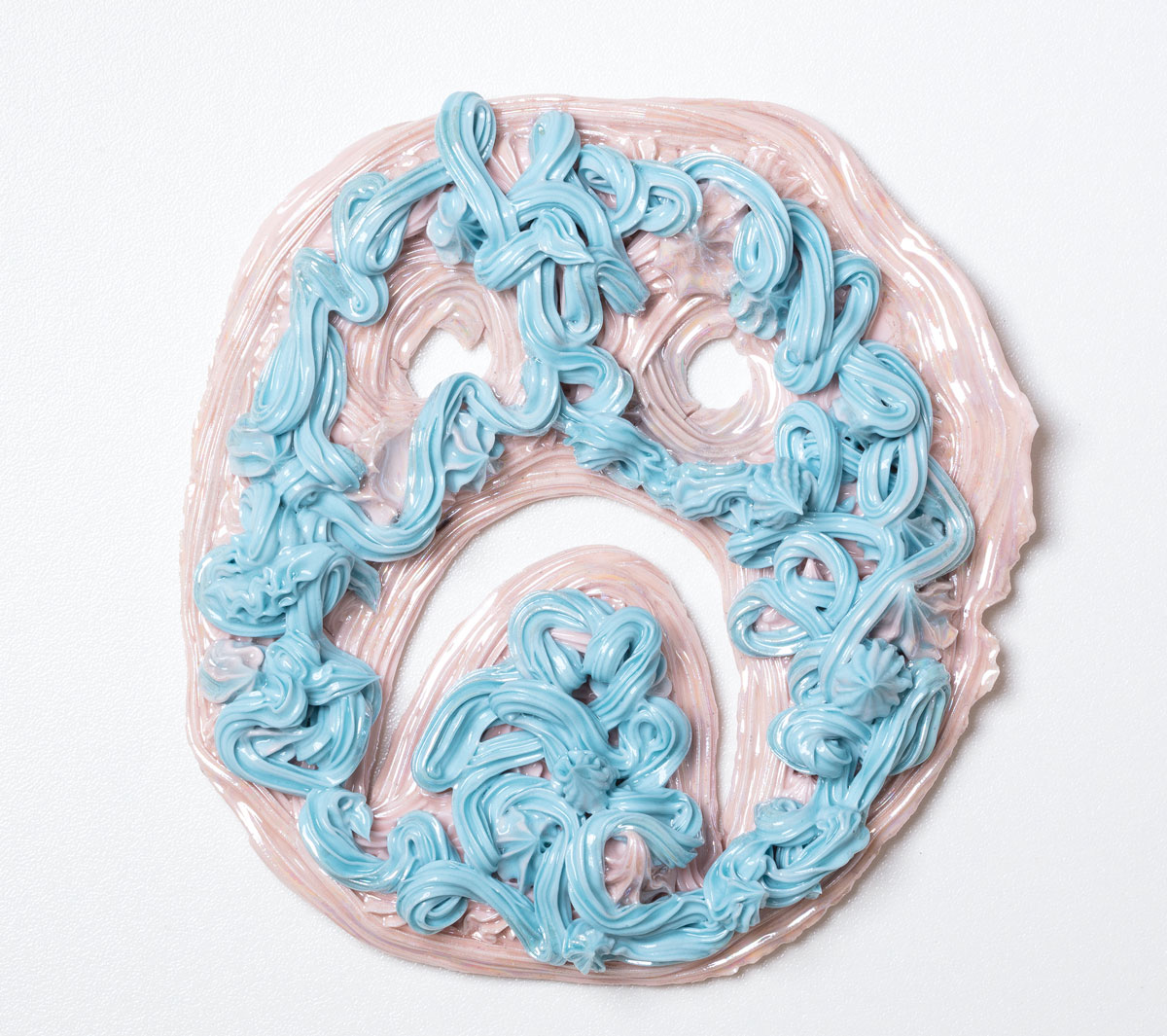
Ebony Russell, Sad Face, Cloy, 2020, piped porcelain, stain, glaze, lustre, 130x140x30mm. Photo: Simon Hewson
Past and present collide in Sydney-based artist Ryan Hancock’s series of earthenware vessels. Identical in traditional urn form and glazed in centuries-old maiolica style, the different images, patterns and words Hancock paints on each are unapologetically and wildly uninhibited, drawing on a mischievously humorous mish-mash of pop culture references from SpongeBob SquarePants to The Muppet Show, from internet memes to viral YouTube videos.
Mistakes and accidents are embraced in Hancock’s works; there is a break in the lip of One does not simply watch the Live Gonzo ep of Boudicca making Patrick Star lightsabre himself, its edges glazed along with the rest.
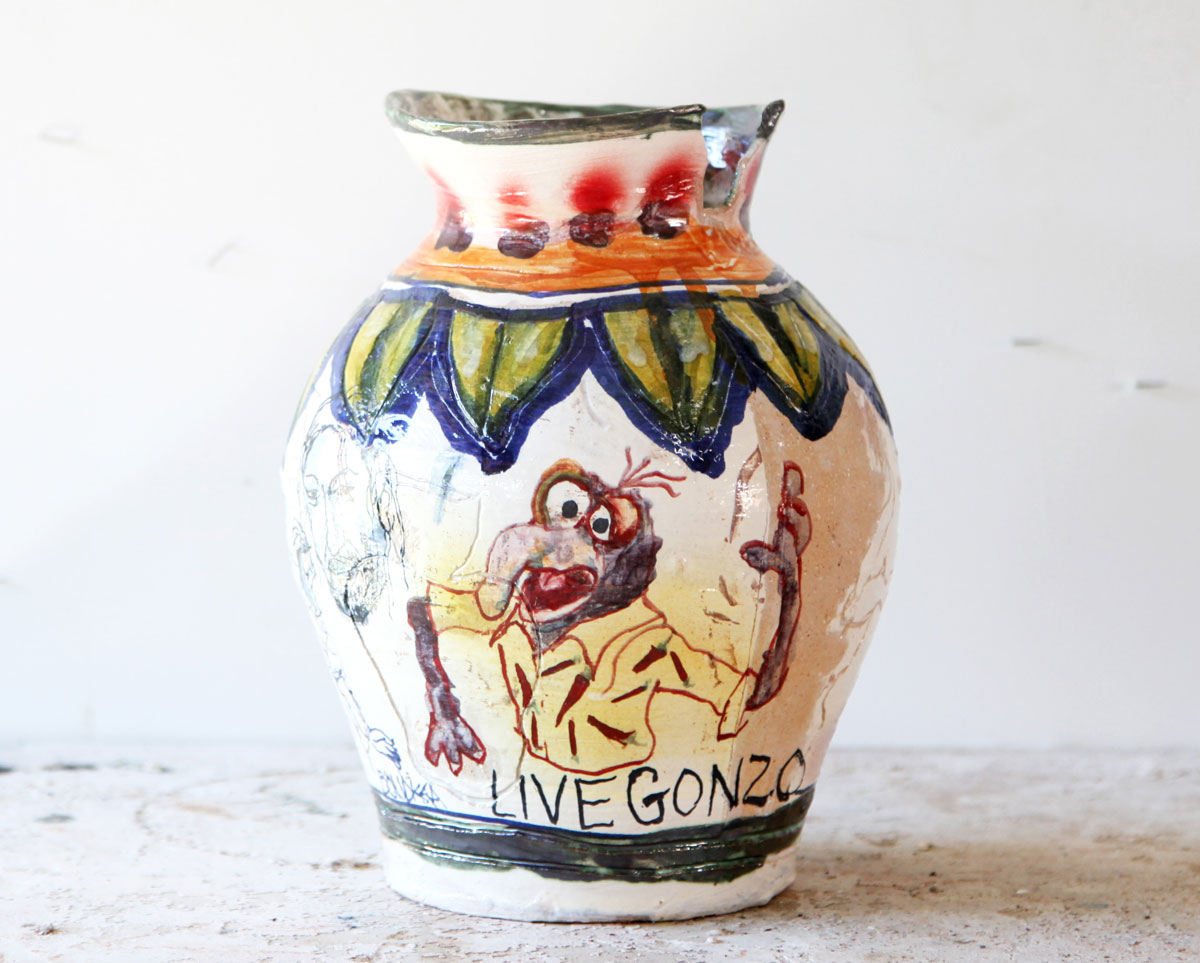
Ryan Hancock, One does not simply watch the Live Gonzo ep of Boudicca making Patrick Star lightsabre himself, 2021, Maiolica glazed earthenware. Photo courtesy of the artist
The work of Tessy McAuslan-King (Victoria) also references traditional forms, but her pieces push at the boundaries of functionality, built up in Pollockian drips and daubs of glazed stoneware that leave gaps and holes in their richly textured and coloured surfaces. They look simultaneously organic, as if formed by accidents of nature, while leaving clear marks of the maker’s hand.
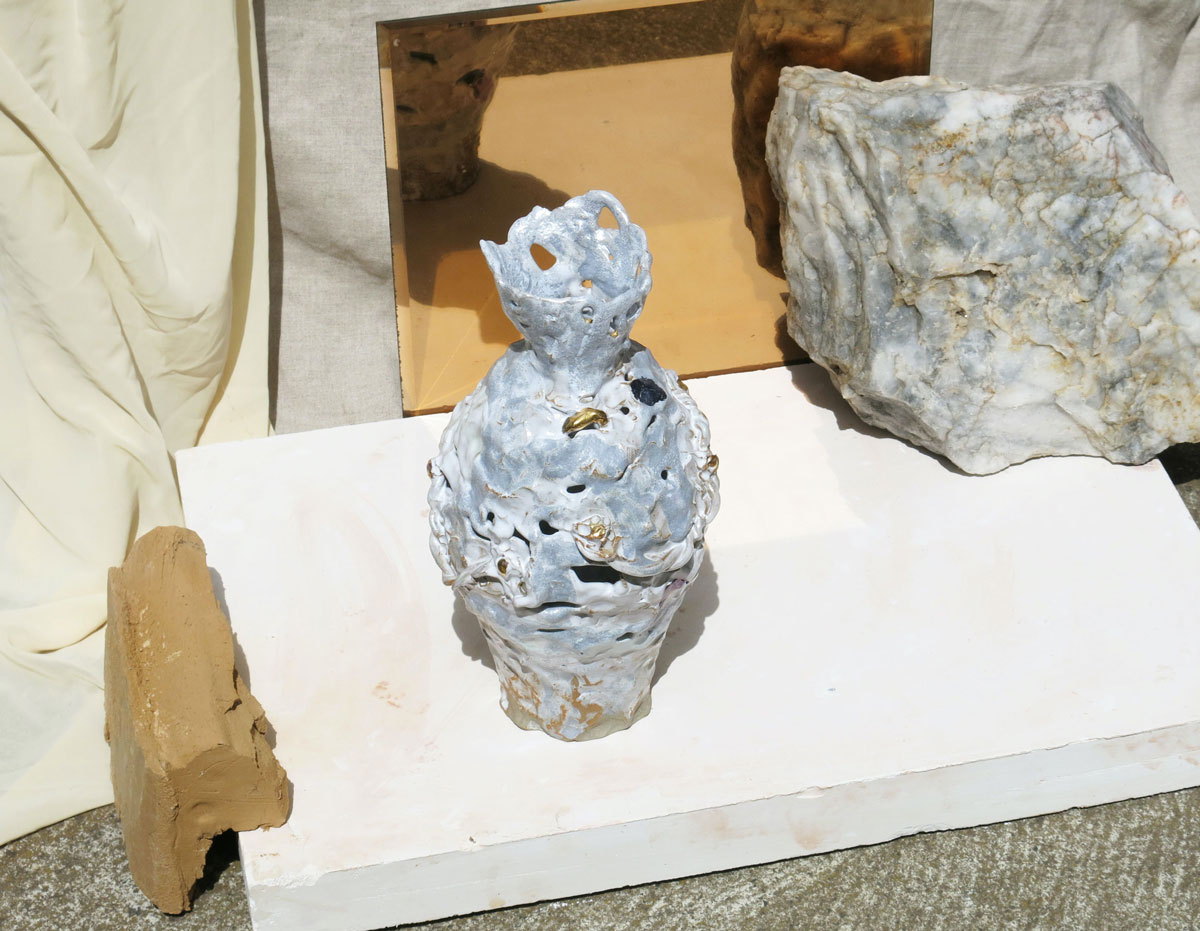
Tessy McAuslan-King, Lattice, 2020, glazed stoneware and lustre, 270x140x140mm. Photo courtesy of the artist
Melbourne-based Nadia Robertson’s small, hand-formed clay sculptures recall prehistoric talismanic objects, the earthy porous surfaces, smooth organic forms, swirled painted lines and sgraffito imbuing them with a sense of ancient Earth magic. There are Seed Women with rounded, fertile bellies, River Owls and small Terra Madre vessels that might contain the universe, powdered Anish Kapoor cosmic blue and neon tangerine colours a bridge to the contemporary.
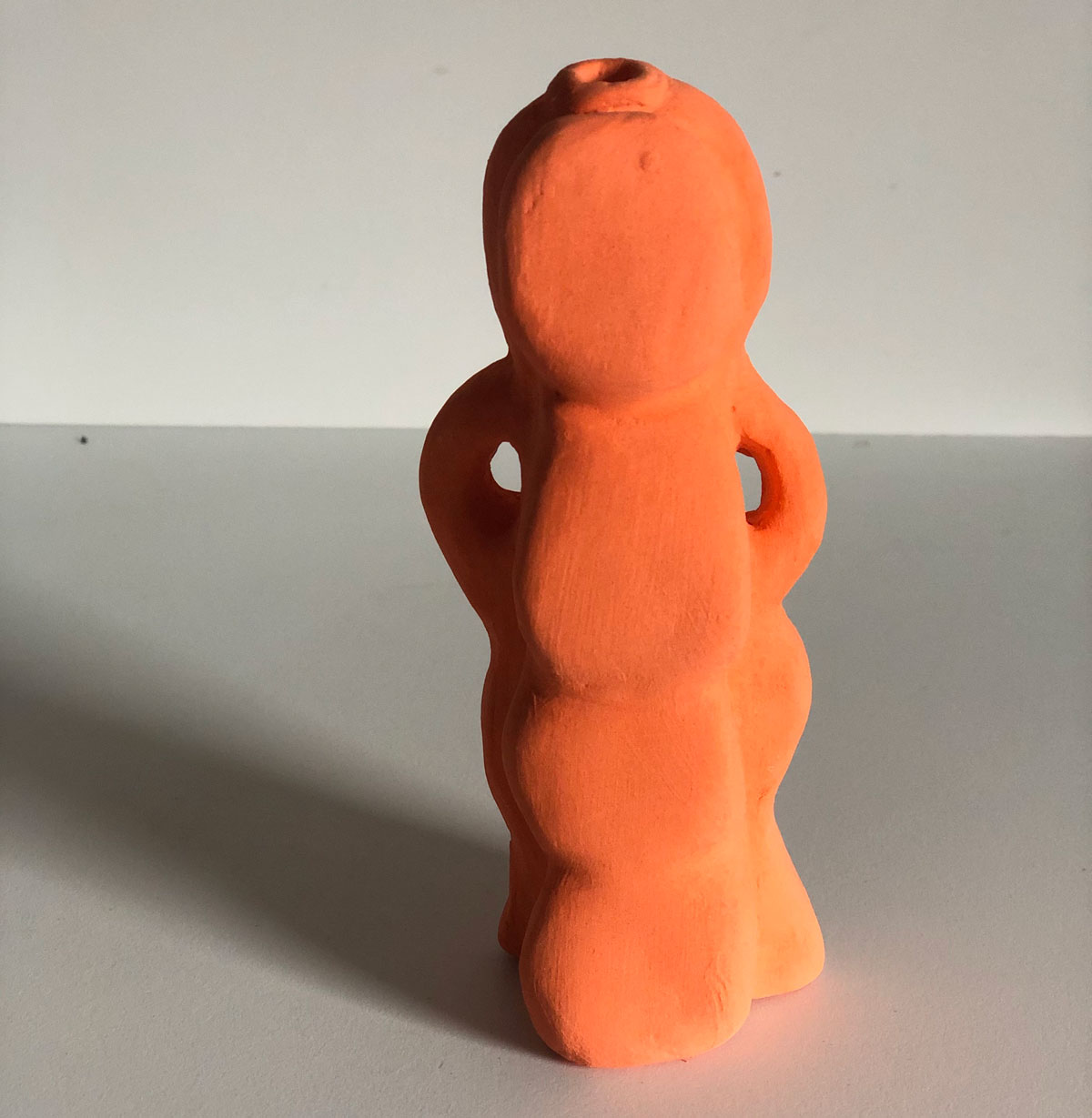
Nadia Robertson, Seed Girl – Tangerine, 2021, raku. Photo courtesy of the artist
A collection of biomorphic slip cast objects are the work of Kirsten Perry, also of Victoria; while some are non-functional, others are fashioned with holes that invite either a contemplation of the void within, or their functional use as containers. Charcoal and cream hues, decadent drips of gold lustre against matte surfaces, or serrated and smooth surfaces provide satisfying textural contrasts, and any accidents in their creation are left deliberately highlighted to emphasise the authenticity and beauty of imperfection and the mark of the maker.
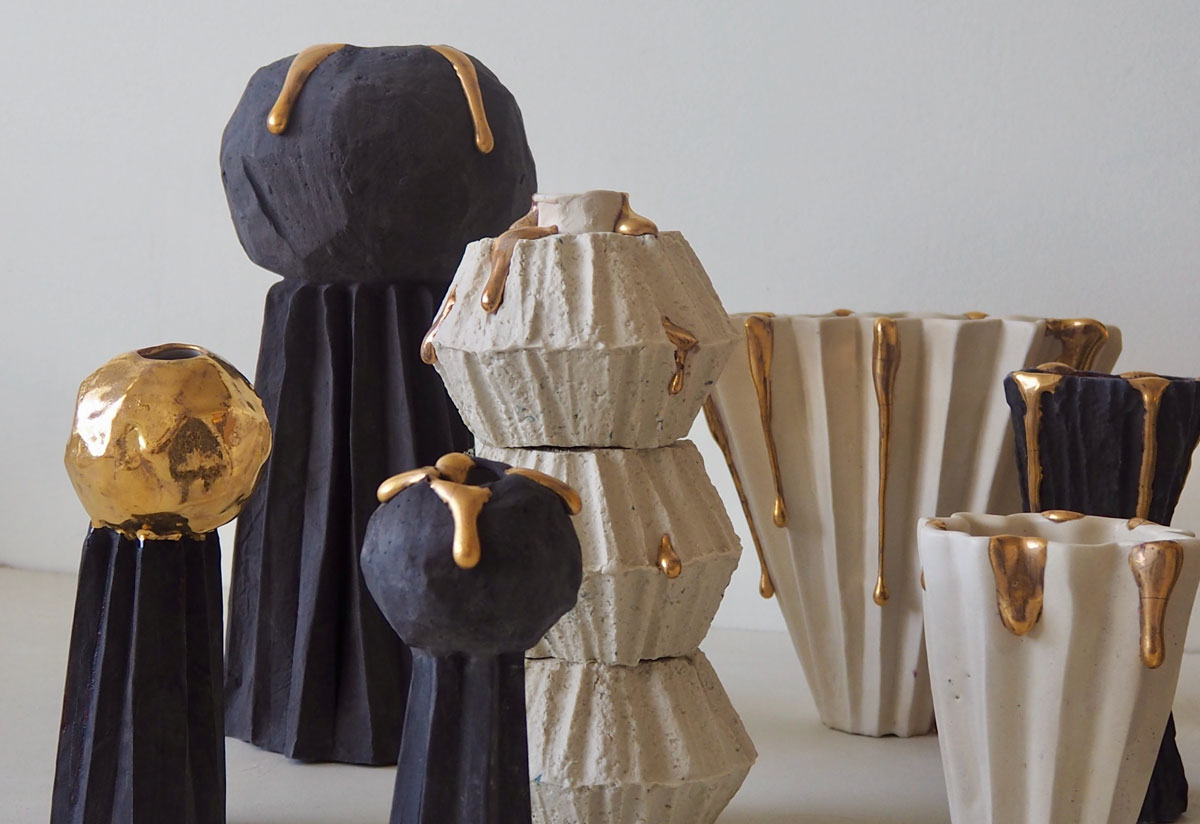
Kirsten Perry, Golden Chimneys and Folded Spouts series, 2021, multi fired slip cast mid fire with glaze and lustre. Photo courtesy of the artist
Luke Ryan O’Connor (NSW) creates his wheel-thrown pieces to echo traditional shapes that are less functional than playful. Unrestrained decorative nodules and globs formed from the detritus of materials such as broken brick, Styrofoam and tile are glazed in myriad colours and gold and platinum lustre to give them an “attention-seeking… perkiness” – in O’Connor’s words – that liberates them from tradition.
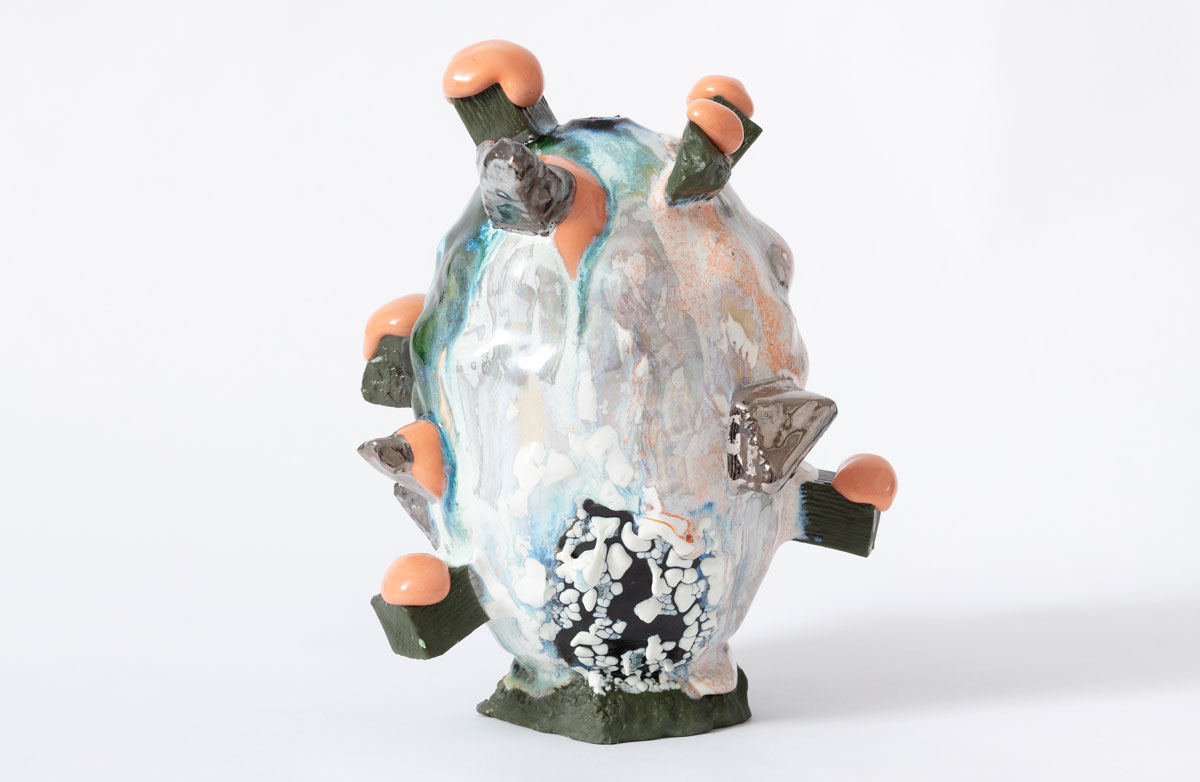
Luke Ryan O’Connor, Dark Green Vessel with Platinum Chunks and Orange Melt, 2021, stoneware, glaze, platinum lustre, 230x180x180mm. Photo courtesy of the artist
The exquisite high-fired terracotta teapots, plates and jugs of South Australian ceramicist Bruce Nuske’s are more conventional in form, their surfaces extensively decorated with stencilled patterns and motifs from nature and meticulously pricked into tactile, pleasing textures. The pieces seem at once traditional and modern, the faint golden-orange streaks in the delicately decorated Teapot (Cream/Blue) giving its contemporary shape the feel of an antique.
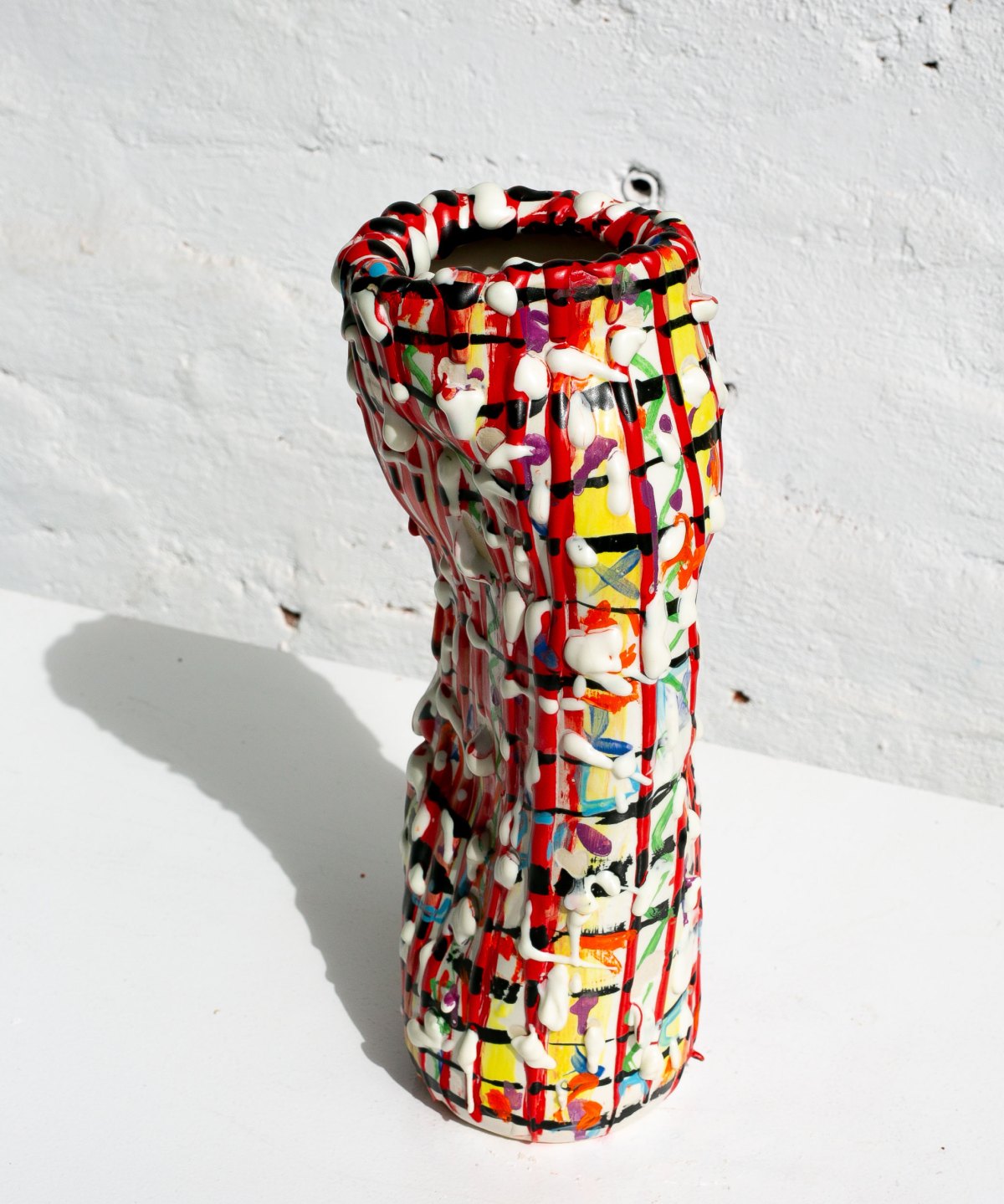
James Lemon, Michael, 2021, stoneware, glaze, 350x160mm. Photo courtesy of the artist
Aotearoa-born, Melbourne-based James Lemon’s pieces in modern, playful abstract patterns, colours and textures contrast with the Old Testament or Old World names he gives them. Traditional form and functionality is played with through the exposure of random, chance accidents; of tactile, softly drooping, bulging, floppy forms, of happy accidents in drips of coloured matt or reflective glazes that lend each piece a dynamic personality of its own.
Claire Johnson (NSW) works across various artistic disciplines, her interest in movement drawn from her former life as a dancer. Each of her pieces is dynamic with the interplay between glazed and unglazed surfaces, scratched textures, patterns and colours. Johnson decorates her works with figurative illustrations that echo her inspirations – the late American ceramic artist Betty Woodman, Pablo Picasso and Marc Chagall – lending her creations the raw vitality of works by these artists.
The return of maximalism evident in interior design and fashion, as well as in the fine arts, is perhaps a liberating expression of a life force that counters the energy-sapping events of the past year, that pushes against restraint and containment. The objects on show in Ceramica Maxima, almost all for sale, embody a life-affirming joyousness and abandon that is to be welcomed in these uncertain times.
Ceramica Maxima is showing at JamFactory at Seppeltsfield until July 11.




